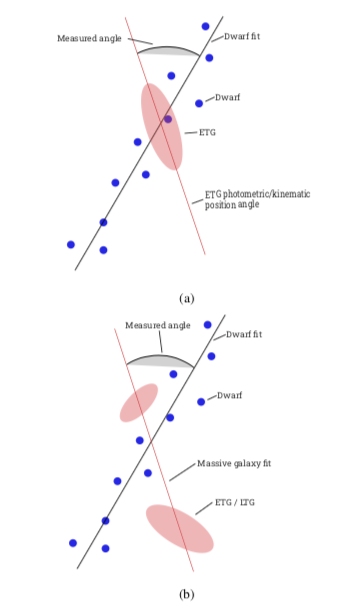
It was first observed in the 1970s that the dwarf galaxies surrounding our Milky Way, so-called satellites, appear to be arranged in a thin, vast plane. Similar discoveries have been made around additional galaxies in the local Universe such as Andromeda, Centaurus A, and potentially M83. In the specific cases with available kinematic data, the dwarf satellites also appear to preferentially co-orbit their massive host galaxy. Planes of satellites are rare in the lambda cold dark matter (ΛΛCDM) paradigm, although they may be a natural consequence of projection effects. Such a phase-space correlation, however, remains difficult to explain. In this work we analyzed the 2D spatial distribution of 2210 dwarf galaxies around early-type galaxies (ETGs) in the low-to-medium density fields of the “Mass Assembly of early-Type GaLAxies with their fine Structures” (MATLAS) survey.
Under the assumption that the dwarfs are satellite members of the central massive ETG, we identified flattened structures using both a variation in the Hough transform and total least square (TLS) fitting. In 119 satellite systems, we find 31 statistically significant flattened dwarf structures using a combination of both methods with subsequent Monte Carlo (MC) simulations with random data. The vast majority of these dwarf structures lie within the estimated virial radii of the massive host. The major axes of these systems are aligned better than 30{\deg} with the estimated orientation of the large-scale structure in nine (50%) cases. Additional distance measurements and future kinematic studies will be required to confirm the planar nature of these structures and to determine if they are corotating systems.

